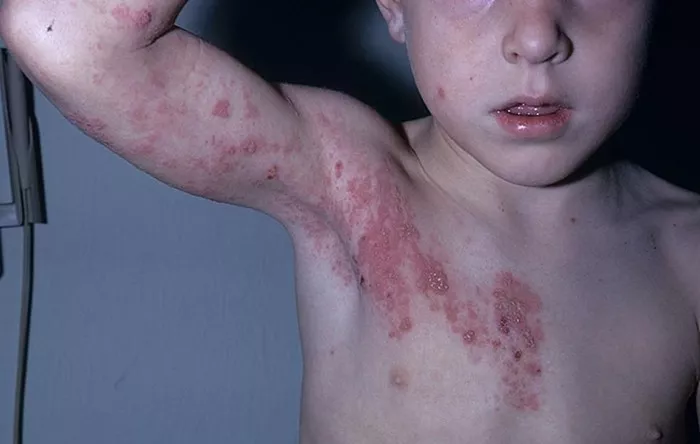In the wake of the COVID-19 pandemic, medical researchers and practitioners have been diligently unraveling the complexities of the virus and its aftermath. While much attention has understandably been focused on the acute phase of the illness, another phenomenon has been gaining recognition: long COVID. This condition, characterized by persistent symptoms that extend beyond the acute phase of the illness, has raised numerous questions and concerns among both healthcare professionals and the general public. Among these concerns is the potential for long COVID to increase the risk of developing other health issues, such as shingles.
Shingles, also known as herpes zoster, is a viral infection caused by the varicella-zoster virus—the same virus responsible for chickenpox. After a person recovers from chickenpox, the virus remains dormant in the body, residing in nerve tissue near the spinal cord and brain. In some cases, typically later in life or when the immune system is compromised, the virus can reactivate, leading to the development of shingles. The condition is characterized by a painful rash that usually appears on one side of the body, along with other symptoms such as fever, headache, and fatigue.
The relationship between long COVID and shingles is an area of growing interest and concern within the medical community. While research on this specific association is still in its early stages, there are several factors that suggest a potential link between the two conditions.
Understanding Long COVID: A Complex Syndrome
Long COVID, also known as post-acute sequelae of SARS-CoV-2 infection (PASC), encompasses a wide range of symptoms that persist for weeks or months after the acute phase of COVID-19 has resolved. These symptoms can affect multiple organ systems and vary widely among individuals, but common manifestations include fatigue, shortness of breath, joint pain, cognitive difficulties, and mood disturbances.
The underlying mechanisms of long COVID are not yet fully understood, but several hypotheses have been proposed. These include persistent viral activity, dysregulated immune response, vascular dysfunction, and autoimmunity. It is likely that a combination of these factors contributes to the diverse array of symptoms observed in long COVID patients.
The Immune System and Viral Reactivation
One potential mechanism linking long COVID to an increased risk of shingles involves the immune system. COVID-19 can dysregulate the immune response, leading to prolonged inflammation and immune activation. This persistent immune activation may create an environment conducive to viral reactivation, including the varicella-zoster virus.
During periods of stress or immune compromise, such as that induced by COVID-19, the varicella-zoster virus may reactivate from its latent state within the body. The stressors associated with COVID-19, such as systemic inflammation, psychological stress, and physical debilitation, could potentially trigger this reactivation process.
Shared Risk Factors and Comorbidities
Another factor to consider is the presence of shared risk factors and comorbidities between COVID-19 and shingles. Certain medical conditions, such as diabetes, autoimmune disorders, and immunosuppression, are known to increase the risk of both COVID-19 complications and shingles. Additionally, advanced age is a significant risk factor for both conditions.
Individuals with long COVID may already have underlying health issues or immune dysfunction that predispose them to shingles. Furthermore, the physiological stress endured during the acute phase of COVID-19 and the ongoing symptoms of long COVID may exacerbate these preexisting vulnerabilities, further increasing the risk of shingles development.
Clinical Evidence and Case Reports
While the direct evidence linking long COVID to an increased risk of shingles is limited, there have been anecdotal reports and case studies suggesting a possible association. In a case series published in the Journal of the American Academy of Dermatology, dermatologists reported an increased incidence of herpes zoster among patients with a history of COVID-19. Similarly, clinicians in various parts of the world have observed cases of shingles occurring in individuals recovering from COVID-19.
While these observations do not establish a causal relationship between long COVID and shingles, they highlight the need for further investigation into this potential association. Large-scale epidemiological studies and prospective cohort studies are needed to elucidate the true magnitude of the risk and identify any underlying mechanisms.
Implications for Clinical Practice
The potential link between long COVID and shingles has important implications for clinical practice, particularly in the management of long COVID patients. Healthcare providers should be vigilant for symptoms suggestive of shingles in individuals with a history of COVID-19, especially those with persistent immune dysfunction or other risk factors.
Early recognition and treatment of shingles can help mitigate complications and reduce the risk of postherpetic neuralgia—a chronic pain condition that can develop after shingles. Antiviral medications such as acyclovir, valacyclovir, and famciclovir are effective in treating shingles if initiated promptly after the onset of symptoms. In addition to antiviral therapy, pain management and supportive care may be necessary to alleviate discomfort and facilitate recovery.
Furthermore, efforts to prevent shingles through vaccination should be emphasized, particularly among individuals at higher risk due to age or underlying health conditions. The shingles vaccine, which contains a weakened form of the varicella-zoster virus, is recommended for adults aged 50 and older by the Centers for Disease Control and Prevention (CDC). Vaccination not only reduces the risk of developing shingles but also lowers the likelihood of postherpetic neuralgia in those who do develop the condition.
Conclusion
The potential link between long COVID and shingles underscores the complex interplay between viral infections, immune function, and long-term health outcomes. While further research is needed to definitively establish this association, the available evidence suggests that individuals with long COVID may be at increased risk of developing shingles. Healthcare providers should remain vigilant for signs of shingles in these patients and take appropriate measures to prevent, recognize, and treat the condition. By addressing potential complications such as shingles, we can better support the health and well-being of those affected by long COVID in the months and years to come.
























